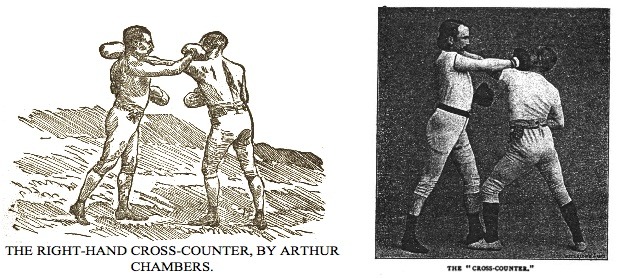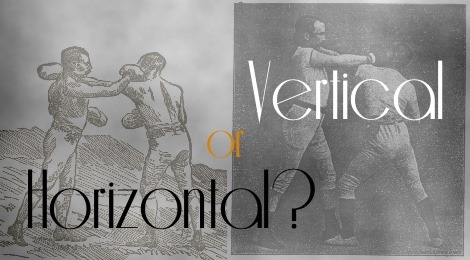It is very common for untrained people to punch with their palms down. I don’t know if it’s something that naturally feels right, or if it’s subconsciously learned from watching movies, boxing matches or other people. It is often taught as the correct way to punch in many Eastern martial arts. Is there anything wrong with it? Does pugilism do it differently, and does Bartitsu adopt it?
Today’s quick lesson is to answer the question: Should I punch with a vertical fist or a horizontal fist?
Martial Arts Diverge
Before getting into pugilism’s answer, it’s important to note that a lot of people have attended other martial arts classes, and that’s where some controversy comes from.
- Styles using a twisting punch (horizontal): Shotokan Karate, modern boxing, Muai Thai
- Styles using a vertical punch: Wing Chun and Jeet Kune Do, Isshinryu Karate
Other styles use a mix of both. In many cases, there is no explanation other than, “this is the way we do it,” or, “this way channels more power.”
The Lead in Boxing
The following advice is repeated in many manuals from different sources, and can be considered fundamental to bare-knuckle boxing:
- When standing in your guard, keep your elbows down near your sides for protection
- Your lead punch should be fast, and straight
- Recover just as quickly, bringing your elbow back to your ribs
So it seems clear to me that all punches from the lead hand ought to have a vertical fist.
The Cross Punch
When punching from the non-leading hand, does the rule hold? The common introduction of this punch is called the Cross Counter, and here are two classic examples side-by-side.

On the left is an illustration from the Art of Boxing by William Edwards (1888) and on the right is a picture from Boxing by R. G. Allanson-Winn (1889). In neither case do they specify what the orientation of the punching hand is. I think it is pretty clear that in the left illustration the hand is palm down, and in the right image, the hand is vertical.
Which is correct?
A Clear Path
The simple rule I tell my students is this:
Use a vertical fist for all targets when you can. It’s fast, and can be retracted to guard with your elbow just as fast. Never use a twisting punch to the mark or low targets because it sends your momentum towards the floor, and punching the mark is always more effective with an upward slant. If you're aiming for the jaw and your opponent’s shoulder is in your way, because they’re tall and you just slipped their punch toward their outside, then use the twisting punch to get over their shoulder or arm.
In the case of the Allanson-Winn picture, the vertical fist is possible because he is punching someone shorter than himself and the shoulder is not an obstacle. In the Edwards illustration, the two fighters are of equal size, necessitating a path over the shoulder.
Improves your Hook, Too.
The round punch or hook should always be thrown with a vertical fist, otherwise the pinky finger takes the brunt of the force from the hit. This is the origin of the “boxers fracture” of the fifth metacarpal. At the moment of impact of a hook, you should be looking at your fingernails.
If you practice your cross punch with a vertical fist, it will be easy to do your hook the same way.
Kinetics
Does it feel more powerful to punch with your palm down? You’re not wrong. By raising your shoulder and turning the elbow out, you engage the anterior deltoid muscle and pectoral muscle more than in the elbow-down configuration.
The difference is minor, which you can test at the gym with an dumbbell incline bench press. Lie on a bench that is set to a shallow incline with a dumbbell in each hand. Try pressing the dumbbells from your shoulder to a full extension, first using a vertical alignment (as if clapping your hands), then using a pronated alignment (flying like Superman).
Although there is only a small kinaesthetic boost, it is compounded by the motion of the body. The twisting punch seems to elicit a greater hip-turn and commitment of the body, while the vertical punch often doesn’t get the same support. However, that’s easily corrected with practice using the vertical fist with a correct posture.
Speed or Power?
In the end, we have several concerns to keep in mind:
- Is this version safe for my punching hand? (Remember the hook.)
- Will this version transmit the most power? (Pronating.)
- Will this version keep me in balance and able to strike, block and counter faster? (Vertical.)
